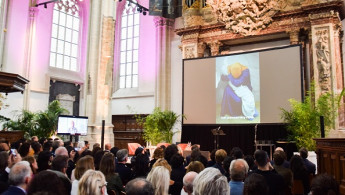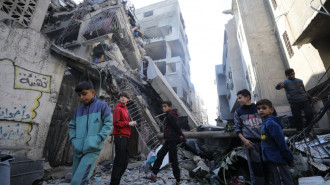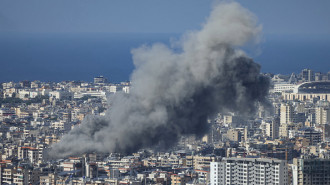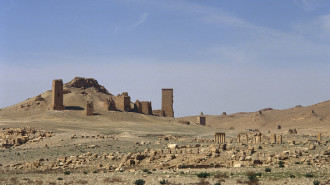A picture of her grief gripped the world. A year on, Gaza woman haunted by memories
The Reuters photograph of Inas Abu Maamar, face buried in the shrouded body of her dead five-year-old niece Saly, was taken days after Israel began its military offensive on Gaza.
It has become one of the most vivid images of Palestinian suffering during Israel's year-long onslaught on Gaza.
Saly was killed with her mother, baby sister, grandparents, uncle, aunt and three cousins. Since then, Abu Maamar, 37, has also lost her sister, killed along with her four children in an airstrike in northern Gaza.
Abu Maamar has moved three times to avoid bombing, at one point spending four months living in a tent. Today, she is back in her home in Khan Younis, in southern Gaza. Cracks run through the corrugated roof; a shower curtain covers a window-sized hole in the wall.
"We lost all hope in everything," said Abu Maamar, sitting amid rubble in the small graveyard by the family house. Beneath the debris, she said, lay Saly's grave.
"Even the grave was not safe."
Israel's military offensive in Gaza, with the declared goal of wiping out Hamas, has killed at least 41,500 people, mostly women and children.
Airstrike
Before Oct. 7, Gaza had faced an extensive Israeli blockade following Hamas' takeover of the Palestinian territory in 2007. There was little work and imports were severely restricted but her family was settled, Abu Maamar said.
Abu Maamar lived with her husband near her brother Ramez's family, allowing her to spend much of her time with her nieces Saly and Seba and her nephew Ahmed.
As the bombing intensified near the house after Oct. 7, Ramez sheltered with his family at his in-laws' about one kilometre (0.6 miles) away. It was hit in an airstrike the next day.
When Abu Maamar heard she went straight to the Nasser hospital in Khan Younis. There she saw Ahmed, then 4, and grabbed him by the hand. She found Saly, dead, in the mortuary.
"I tried to wake her up. I couldn't believe she was dead," she said.
It was there that Reuters photographer Mohammed Salem took the picture of Abu Maamar cradling her dead niece, her body wrapped in a white sheet.
The image was named World Press Photo of the Year and won a Pulitzer Prize along with other Reuters images of the Oct. 7 attack and war in Gaza.
Displacement
Israel alleged it had attacked 5,000 Hamas targets in Gaza from Oct. 7 until Oct. 17, the day of the airstrike that killed Saly. Palestinian health authorities said about 3,000 people had been killed by that point, including 940 children.
Israel's military did not respond to a request for comment on the strike that killed Saly.
By December, with Palestinian authorities saying the death toll in Gaza had topped 15,000 and Israel preparing to expand its ground assault to southern Gaza, Abu Maamar and other family members moved to Mawasi, a beach area where displaced people sought refuge in tents.
They moved twice more as Israeli forces attacked the south, ordering civilians first from Khan Younis and then the city of Rafah.
Now back home, Abu Maamar says there is no point moving any more. She picked up Saly's favourite outfit, a black dress with traditional red Palestinian embroidery, and pressed it to her face.
"We are just waiting for the cascade of blood to stop."
(Reuters)





 Follow the Middle East's top stories in English at The New Arab on Google News
Follow the Middle East's top stories in English at The New Arab on Google News


